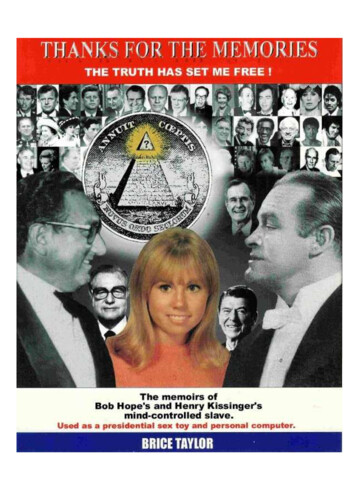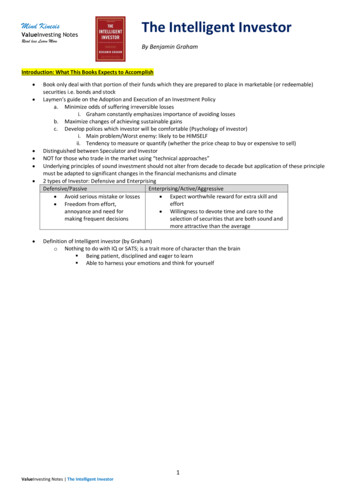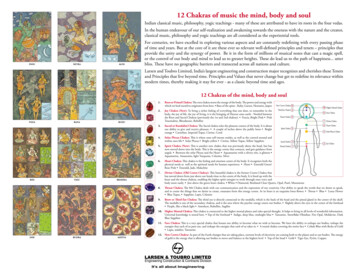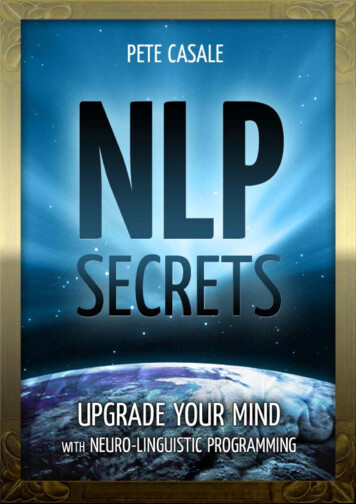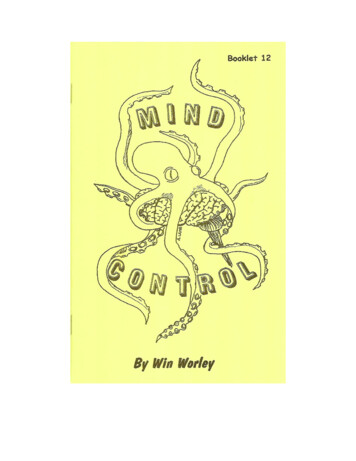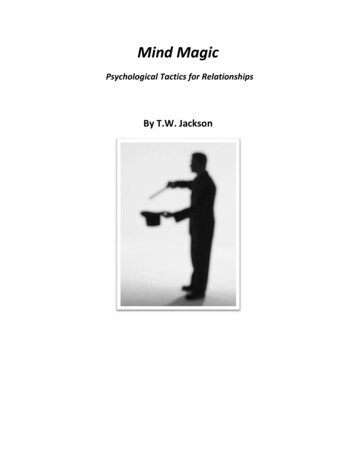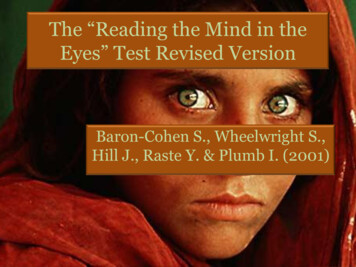
Transcription
The “Reading the Mind in theEyes” Test Revised VersionBaron-Cohen S., Wheelwright S.,Hill J., Raste Y. & Plumb I. (2001)
What do all these people have incommon?Hans Christian AndersonWolfgang Amadeus MozartLewis CarrolIsaac NewtonJeffrey DahmerGeorge OrwellCharles DarwinAlbert EinsteinAdolf HitlerThomas JeffersonMichaelangeloAndy WarholJames JoyceCharles RichterStanley KubrickWB Yeats
What is Autism (ASD)?Autism (wide-)Spectrum Disorder– Signs/symptoms such as:– obsessions– repetitive behaviors– lack of social skills – ‘out of sync’, atypical oroffensive language– difficulties with non-verbal communication
Bell Ringer Brain Man Youtube Video Provide five examples from this video thatDaniel Tammet shows signs of Autism.
Baron-Cohen et al.Simon Baron-Cohen is the leading expert inautism research– (1985) Sally-Anne test: autistic children havedelayed development of a theory of mind(ToM theory of mind)– (1997) “Eyes Task” for adults
Social Cognition ToM Theory of Mind– being able to put yourself in somebody else's shoes, beingable to imagine what's going on in his or her mind.’Baron-Cohen– Ability to do this generally appears at the end of the firstyear of life.– Deficit is believed to be core to an Autism diagnosis. Important finding:– Intelligence (IQ) does not equal socialunderstanding
What is the Sally-Anne Test? Sally-Anne TestA first-order false belief task ‘normal’ children cognitive age of 4, 90% pass autistic children mental age of 5, 80% fail
Autistic AdultsBehavioral strategies– make eye contact– learn appropriate social responses, e.g. armaround crying child, tone of voice– In 1985, Ψ (Psychology) had no test forautism in adults.– Baron-Cohen developed the
The Reading the Minds Eyes Test “The 1997 Eyes Task succeeded indiscriminating adults with Asperger’sSyndrome (AS) and high-functioning autism(HFA) from controls but suffered frompsychometric problems (measurementproblem- not enough of a difference betweenautistic v. ‘normal’ children)” The 2001 task rectifies these problems
What is Asperger’s syndrome? impairment in reciprocal social interaction restricted & obsessively repetitive patternsof behavior differs from other ASDs; a relativepreservation of linguistic and cognitivedevelopment
AIM To investigate if high functioning adultswith autism or Asperger syndrome wouldstruggle on a theory of mind test. Also iffemales will do better than males.
Bell Ringer The Reading the Minds Eyes Test Revised
Participants - Group 1: Autistic/Asperger’s.– 16 Participants (13 male/3 female)– 4 Autism, 12 Asperger’s.– Mean IQ: 105.3 - Group 2: Control Group.– 50 Participants (25 male/25 female).– Cambridge University.– IQ: Above 85. - Group 3: Tourette's.– 10 Participants (8 male/2 female).– Same age as Group 1.– Mean IQ: 103.5
Method Quasi Experiment. Quantitative Data.– Participants are given a standardized Eye Task.– Given images of Black & White eyes and shownfor 3 seconds.– Once shown, they had a choice between twowords (i.e. Concerned/Unconcerned).– Shows 25 set of eyes.– Then asked, 'Which word best describes whatthis person is thinking or feeling?’.– This was backed-up by the 'Strange Stories' task,which was used to back up the results of the EyeTask.
Method Two control tasks were also carried out tofurther back the Eye Task, these being the'Gender Recognition' task, and the 'BasicEmotion Recognition' task. - The order of these tasks was random. - 'Normal' men and women - IV: Personality Characteristics (Autism,Tourette's, Normal). - DV: Performance on the Eye Task.
Results Group 1 scored the lowest, showing theirclear lacking of Theory of Mind. -Females clearly have a more advancedTheory of mind than men.
ResultsGroupsEye Task - Mean ScoreAutistic/Aspergers16.3Control Group20.3Tourette's20.4GroupsEye Task - Mean Score'Normal' Males'Normal' Females18.821.8
Strengths Everybody carried it out in the same way Standardised, easily replicable. Strange Stories Task/2 Control Tasks Backsup results/concurrent validity. Lab Conditions: High levels of control,eliminate extraneous variables.
Weaknesses Reductionist: Looks only into the ToMof Autistic people and not them as a whole. Lab Exp: Low Ecological Validity, can'tbe generalised/not everyday occurrence. Only required to look at eyes, but in reallife we determine emotion from the face.
Reflective The Transporters- Cartoons developed tohelp children with Autism Read the article about the cartoonsdeveloped to aid autistic children. We willthen watch an example of these cartoons.
The Reading the Minds Eyes Test “The 1997 Eyes Task succeeded in discriminating adults with Asperger’s Syndrome (AS) and high-functioning autism (HFA) from controls but suffered from psychometric problems (measurement problem- not enough of a difference between autistic v. ‘normal’ children)” The 2001 task rectifies these problems
